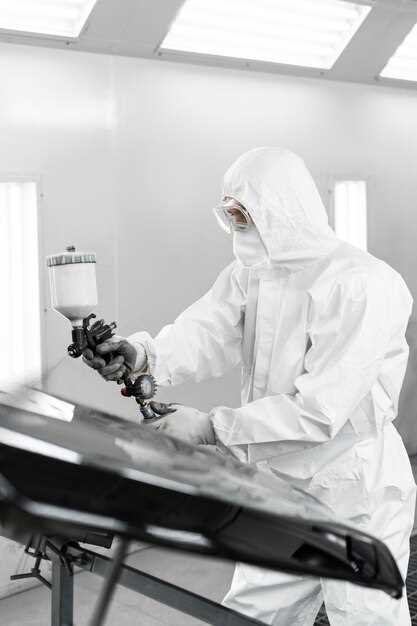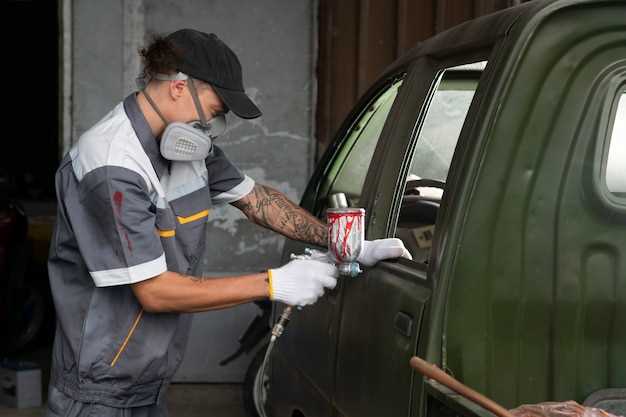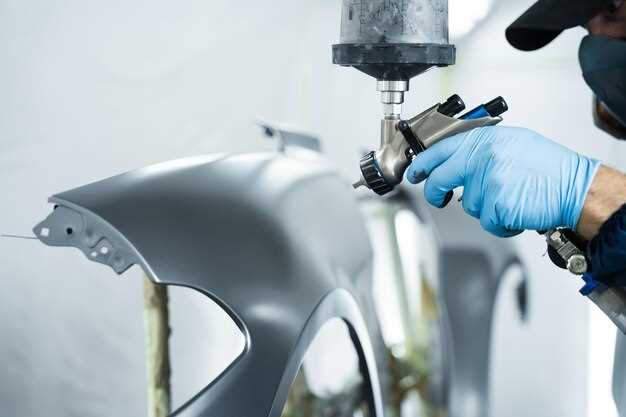
The world of classic car restoration is a captivating one, attracting enthusiasts with its blend of artistry and mechanics. Among the various aspects of restoring a vintage automobile, painting often stands out as a significant and crucial phase. The choice between taking on a DIY painting project or hiring professional services can profoundly impact both the final appearance and the longevity of the vehicle.
Choosing to paint a classic car yourself offers an alluring sense of satisfaction. It allows owners to immerse themselves in the restoration process, gaining firsthand experience with the nuances of automotive painting. However, this option comes with its own set of challenges, including the need for specialized tools, a thorough understanding of paint types, and techniques that ensure a high-quality finish.
On the other hand, enlisting professional services can provide a level of expertise that is hard to match. Professionals bring years of experience, sophisticated equipment, and skills honed through numerous restoration projects. They understand the complexities involved in not only achieving the perfect aesthetic but also in selecting paints that ensure durability and resistance to the elements.
Assessing Your Skills for DIY Classic Car Restoration Projects

When embarking on a DIY classic car restoration project, it’s essential to assess your skills accurately. This evaluation will help determine whether you can handle the tasks required or if you should consider professional services. Start by identifying your experience level in mechanical work and body repairs. Do you possess fundamental knowledge of car systems such as engines, transmissions, and electrical components?
Mechanical proficiency is a significant factor in successful restoration. If you have a strong background in automotive mechanics, you will find it easier to troubleshoot and repair various issues that arise during the restoration process. On the other hand, if your experience is limited, be prepared to invest time in learning new skills.
Another crucial aspect is bodywork and painting. Restoring the exterior of a classic car often involves sanding, priming, and applying paint. If you have honed your skills in automotive painting or have done similar tasks in the past, you may feel confident tackling this part of the project. However, if your only exposure has been to basic painting techniques, consulting a professional might be wise to achieve a flawless finish.
Assessing your availability and tools is equally important. Restoration projects can be time-consuming, demanding a commitment of hours or even weeks. Ensure you have the necessary tools, like welders, sanders, and paint sprayers, at your disposal. Without the right equipment and time, the restoration might become overwhelming.
Lastly, consider your end goals for the project. Are you looking to bring a classic car back to factory condition, or are you comfortable with a more personalized, custom approach? Your aspirations can guide your skill assessment and help you decide if DIY restoration is suitable or if hiring professionals will better suit your vision.
Understanding the Costs and Timeframes of Professional Car Painting Services

When considering professional car painting services, one of the critical factors is the cost involved in the restoration process. The price can vary significantly based on the quality of materials used, the level of detail required, and the expertise of the professionals performing the work. Generally, a basic paint job may start at around $500, while a higher-end restoration focusing on meticulous detail can range anywhere from $2,000 to $10,000 or more.
The complexity of the painting process also affects the overall cost. If bodywork is necessary, such as fixing dents or rust, this additional labor and material will increase the total price. Premium materials, including high-quality paints and protective coatings, also contribute to the final bill. A classic car restoration often necessitates extensive prep work to ensure the best finish and longevity of the paint, enhancing the vehicle’s value.
Timeframes for professional car painting services can also vary widely. A simple paint job may take a few days, while a complete restoration could take several weeks to months, depending on the scope of work. Factors such as drying times, environmental conditions, and the availability of skilled labor play crucial roles in determining how long the process will take. Planning ahead and discussing timelines with professionals can help set realistic expectations and ensure that your classic car receives the attention it deserves.
Essential Tools and Techniques for a Successful DIY Car Painting
When embarking on a DIY car painting project, having the right tools and understanding essential techniques are crucial for achieving a professional-looking finish. The right preparation and application can significantly enhance the quality of the painting and overall restoration of the vehicle.
Tools
- Spray Gun: A quality spray gun is fundamental for an even application of paint. Choose one that suits your experience level, as options range from budget-friendly models to more advanced setups.
- Compressor: An air compressor is necessary to support the spray gun. Ensure it has enough power and capacity to handle the gun’s requirements.
- Sandpaper and Block Sander: These tools are essential for surface preparation. Use varying grits for smoothing surfaces, removing old paint, and ensuring proper adhesion of the new paint.
- Primer: A good quality primer enhances paint adhesion and provides a uniform base. Choose a primer suitable for automotive applications.
- Paint: Select high-quality automotive paint that offers durability and a glossy finish. Consider both base and clear coat options to achieve the desired look.
- Protective Gear: Always wear a mask, goggles, and gloves to protect yourself from harmful chemicals during the painting process.
Techniques
- Surface Preparation: Thoroughly clean the car surface to remove dirt, grease, and old paint. Sanding is crucial to create a smooth surface for the new paint layer.
- Masking: Use masking tape and paper to cover areas that should not be painted, such as windows, trim, and tires. This step is vital to achieving clean lines and avoiding paint overspray.
- Even Application: When using a spray gun, maintain a consistent distance from the surface and use smooth, overlapping strokes to ensure an even coat of paint.
- Multiple Coats: Apply multiple thin layers rather than a single thick coat. This technique minimizes runs and drips, resulting in a smoother finish.
- Drying and Curing: Allow adequate drying time between coats and before applying a clear coat. Follow the manufacturer’s recommendations for curing times to achieve optimal results.
By utilizing the right tools and mastering essential techniques, DIY enthusiasts can successfully undertake a car painting project that not only improves the vehicle’s aesthetics but also contributes to its overall restoration.




